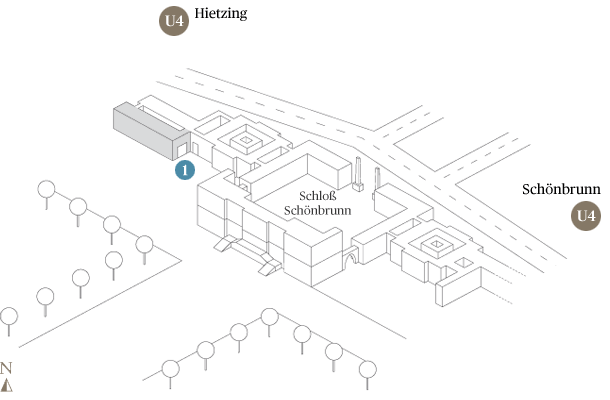Crane neck and gold crepine
The Vienna Academy of Fine Arts meets the Wagenburg
"Crane neck" and "gold crepine" – two poetic-sounding terms that one would hardly associate with carriages today – provide the unusual title of an equally unusual exhibition. The Wagenburg of the Kunsthistorisches Museum, one of the most important collections of carriages in the world, has invited contemporary artists to allow themselves be inspired by the beauty and hidden messages of the imperial conveyances. For the first time a dialogue has been initiated between the cultural heritage of historic vehicles and developments in contemporary art.
"Crane neck" was the term given to the elegant curved shape in which the perch (the element joining the front and rear axles) of luxury carriages was made. It was a technically superfluous but extremely elegant detail which demanded the greatest skill on the part of the smith and was thus only to be found on the grandest conveyances. Equally exclusive was the "gold crepine", a cord with tiny loops formed of gold tinsel with which the tassels on the driving box and the passementerie trimmings on the inside of the carriage were embellished. Both terms belonged to common vocabulary in the 19th century; today, however, their meaning has long since faded into obscurity. Thus they represent the vanished world of stately court ceremony, horse-drawn vehicles and the forgotten art of carriage building. These intriguingly poetic terms are intended to rouse visitors´ curiosity and invite them to view this testimony of the past in a new light, aided by works of contemporary art.
Twenty advanced students from various master classes at the Vienna Academy of Fine Arts are creating new works based on a critical reckoning with the historical vehicles, pointing up the connections and interfaces of the museum exhibits with contemporary art discourse. This dialogue between "old" and "new" will offer the visitors to the museum unexpected perspectives, making the great variety of connections these historical vehicles have with the modern world both tangible and visible.
This cooperation between the Academy of Fine Arts and the Wagenburg, unusual though it might seem at first glance, offers the participating artists the opportunity of a critical exploration of history and the present. For the Wagenburg it means opening up to the discourse of contemporary art, whose central concern is the analysis of form and content.
Project manager
Monica Kurzel-Runtscheiner
Historical advisors
Monica Kurzel-Runtscheiner, Elisabeth Samsonow
Curator
Elisabetta Bresciani
Artists
Students of the Academy of Fine Arts, Vienna



